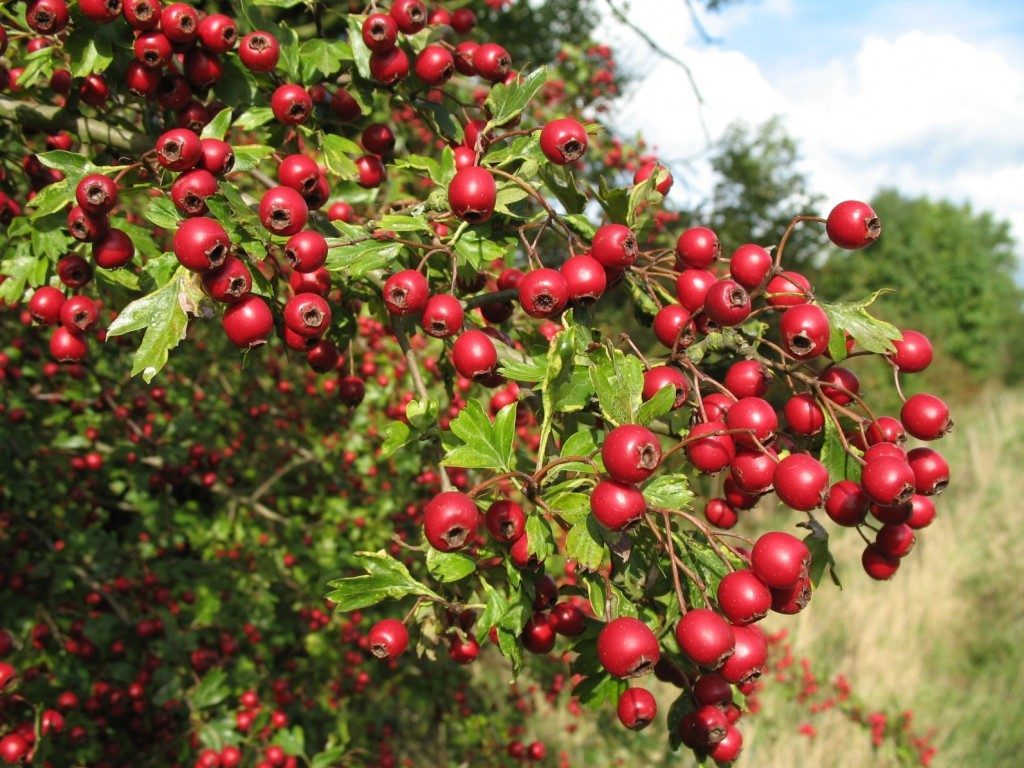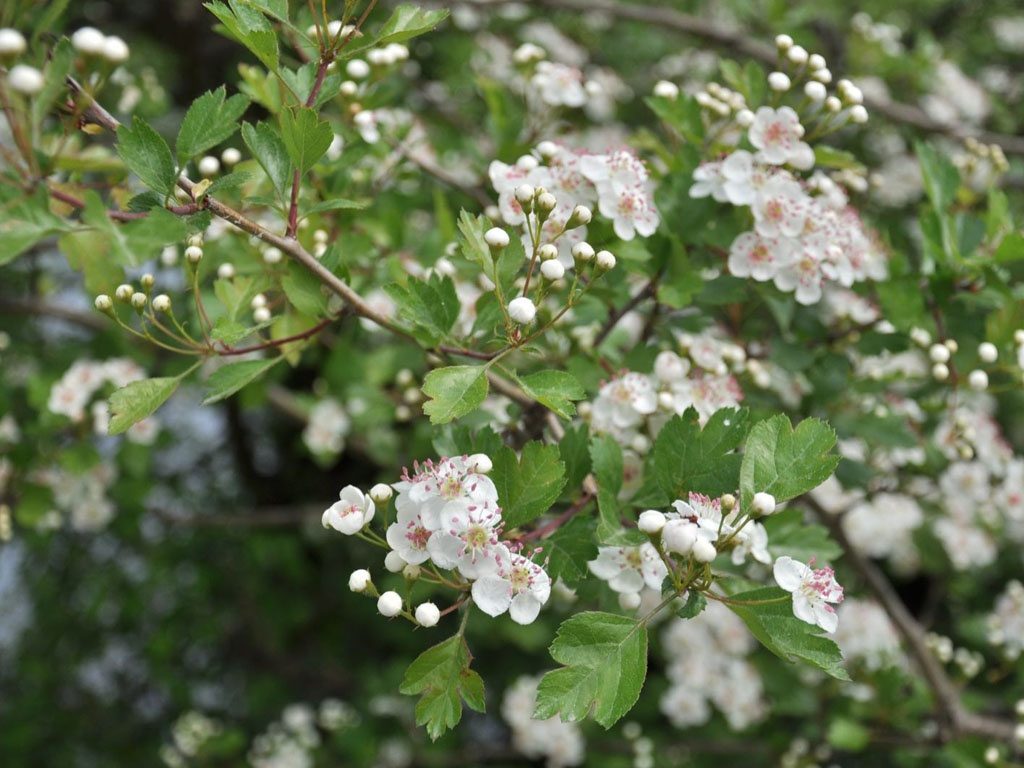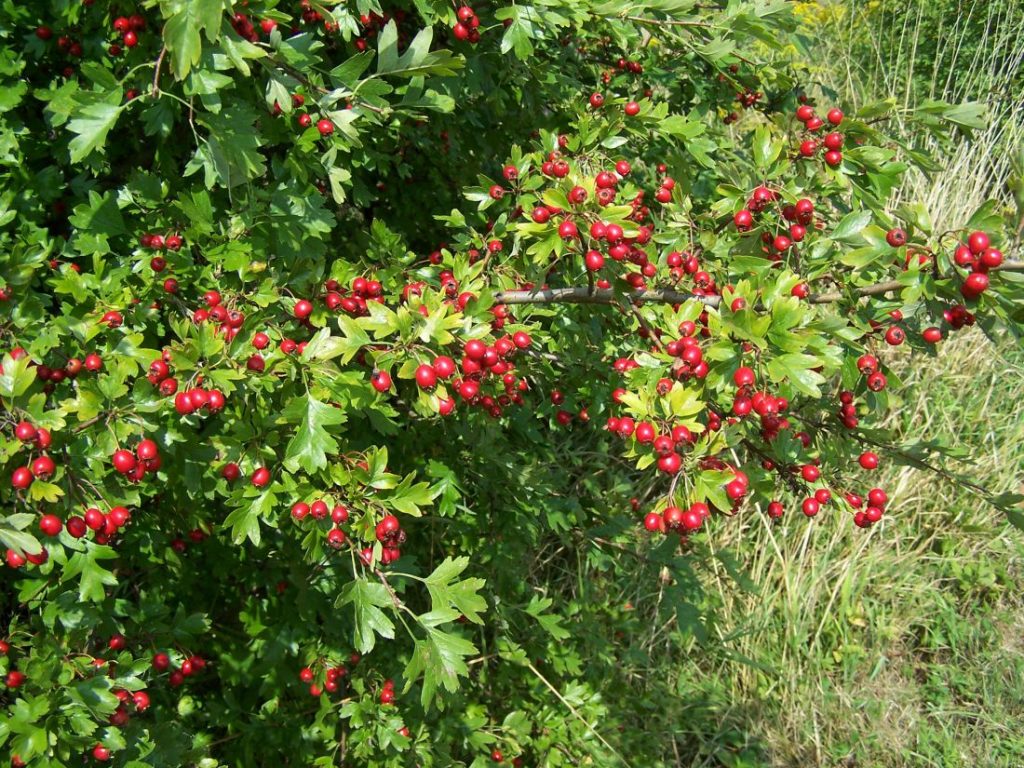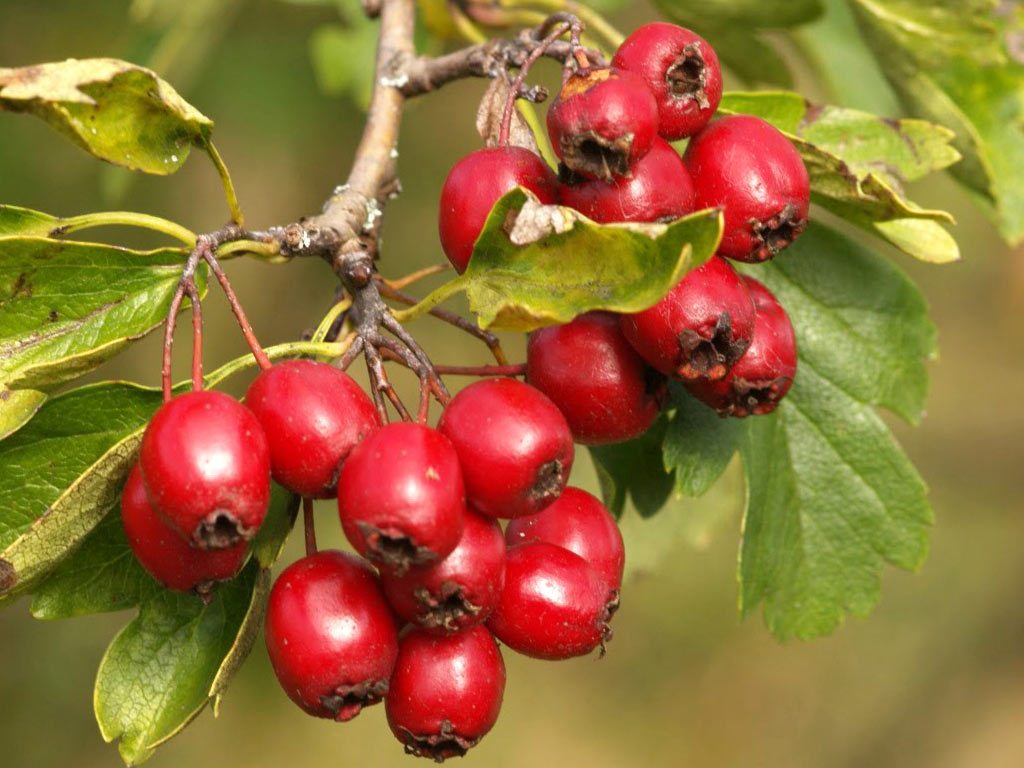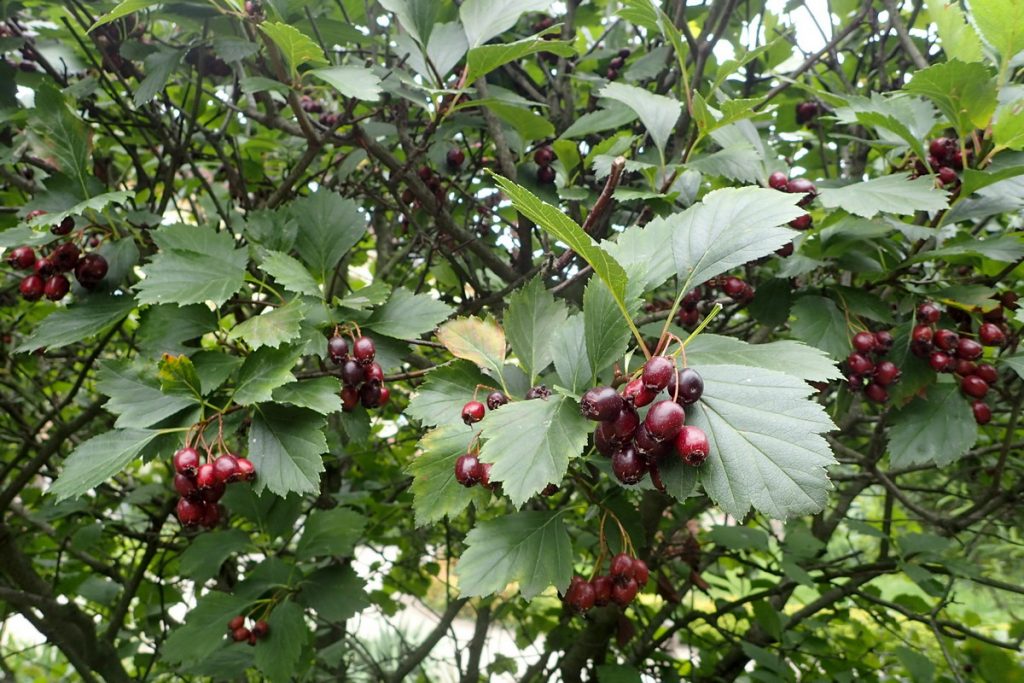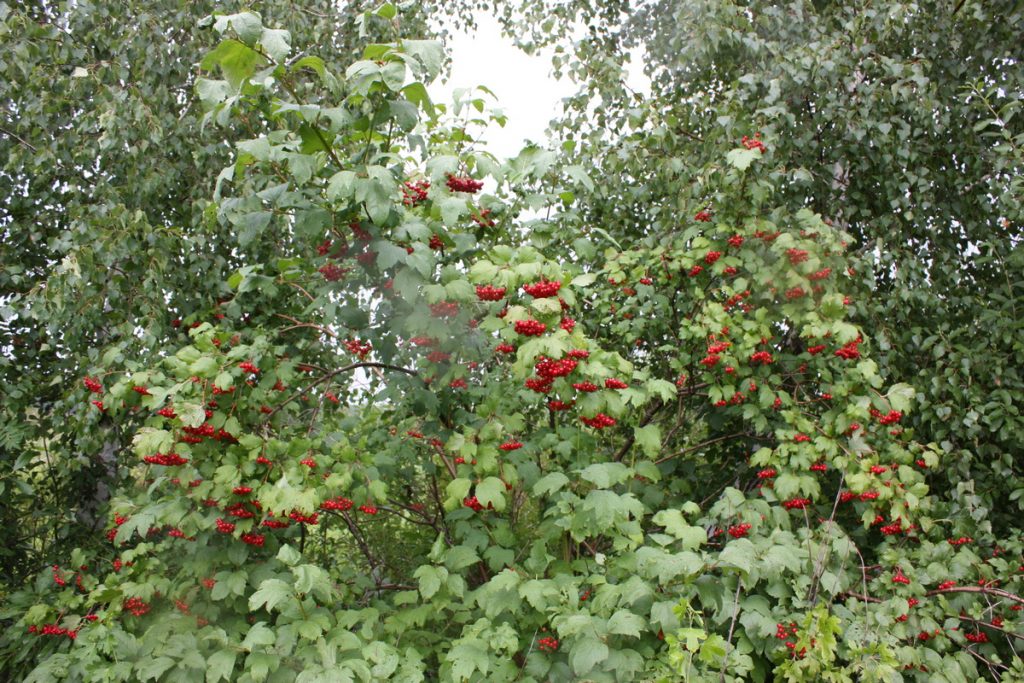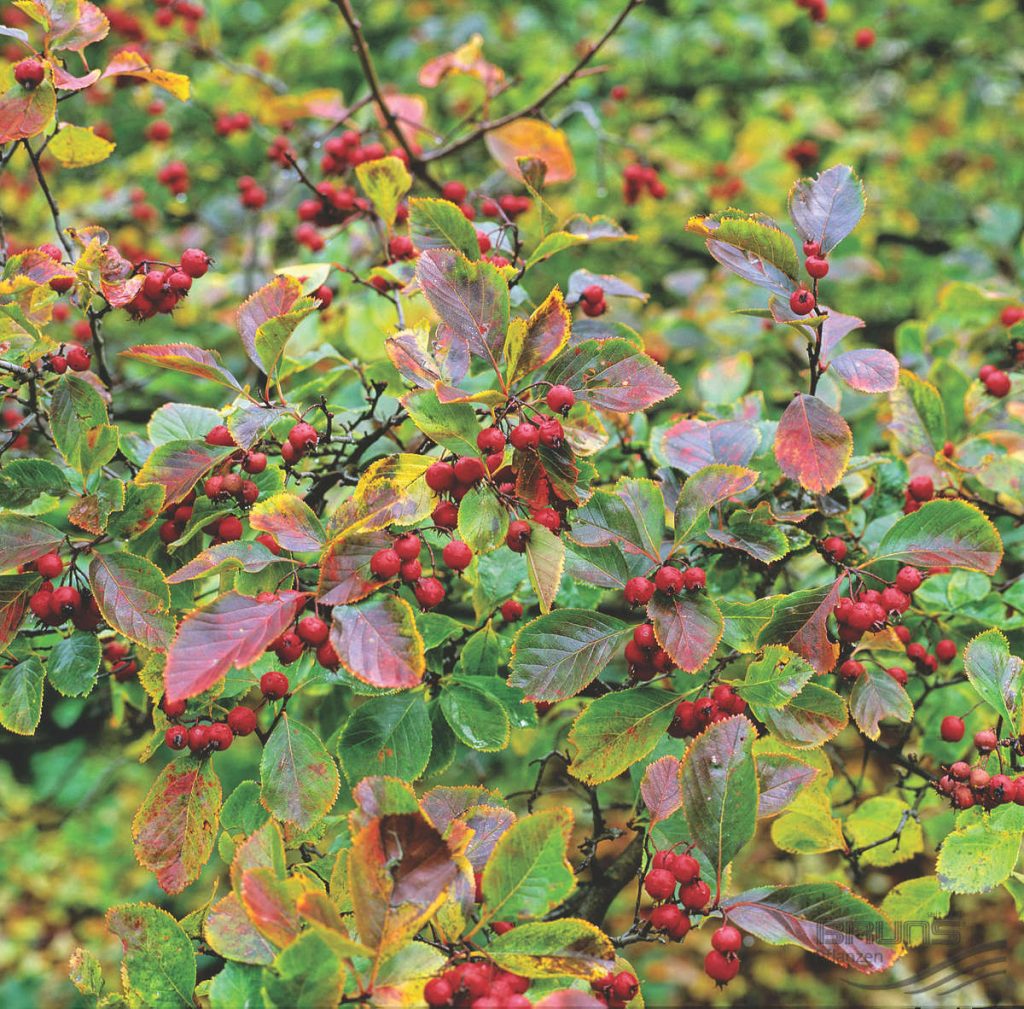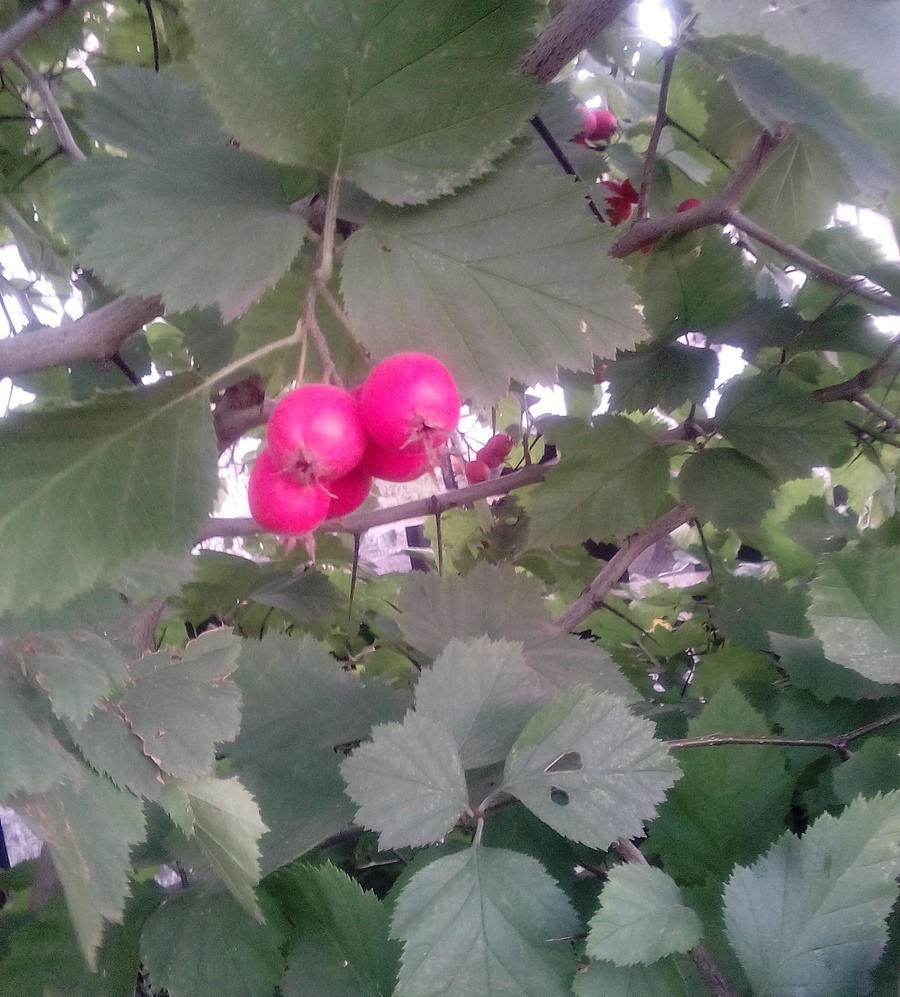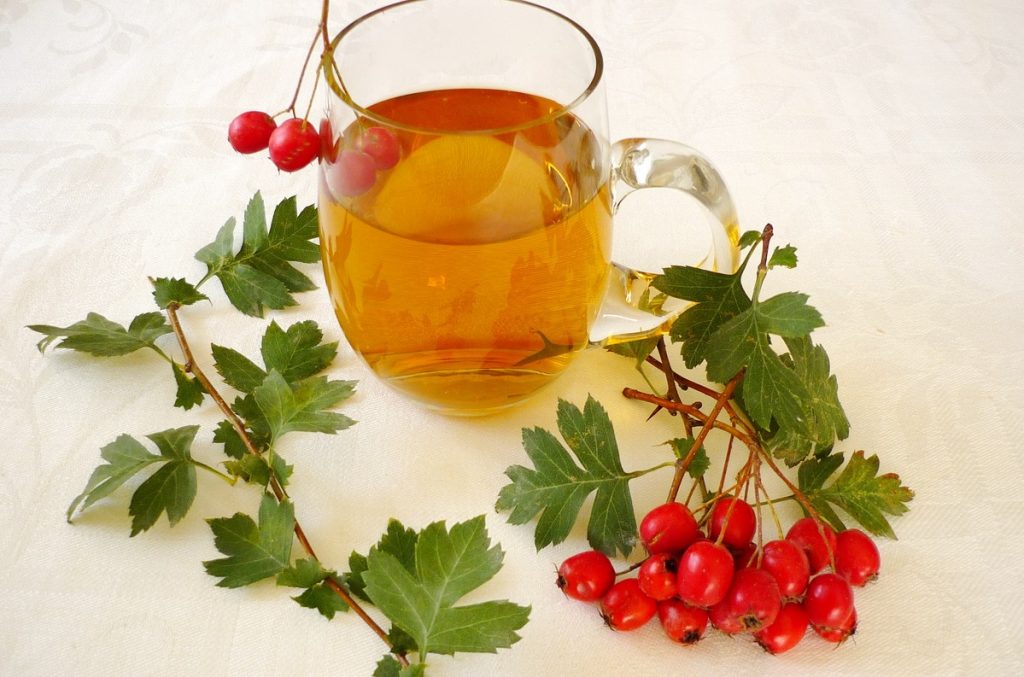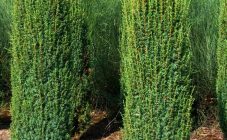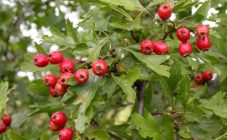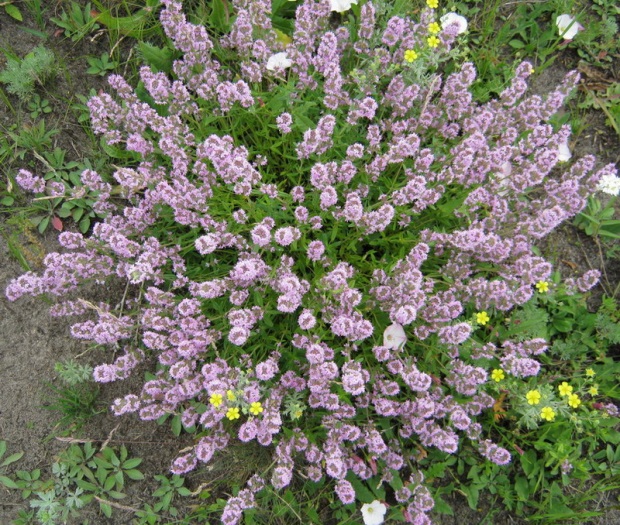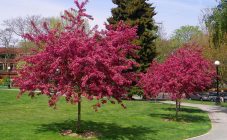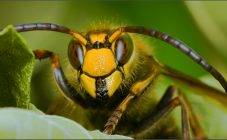Content:
Hawthorn (name in Latin - Crataegus) is a tall, usually up to 2.5-3 meters, slowly growing shrub. The toothed leaves along the edges have a regular arrangement. The branches are equipped with large spines. The flowering period of the hawthorn falls in late May - early June, when the white-pink flowers, collected in loose inflorescences, bloom in all their splendor.
The plant is known for its decorative and medicinal properties. Probably everyone knows what a blooming hawthorn looks like. The culture can be used as a fruit tree (for harvesting fruits), as well as for other purposes, for example, as a hedge, element of landscape composition, landscape nature, etc.
The genus Hawthorn belongs to the multicolored family. The native land of the shrub is North America and Eurasia.
Description of culture
There are 47 varieties of this plant on the territory of Russia. The most common are:
- Blood red;
- Siberian.
Hawthorn is a tree decorated with a dense, majestic crown of a spherical shape (asymmetric and ovoid is also found). The height of the tree is 2.5 - 3 meters, however, there are also low specimens. The size of the spines on the shoots can be up to five centimeters in length. In general, the height of the tree is determined by the nature of the pruning and formation of the shrub.
The leaves are colored dark green or yellow-green. The crown looks especially bright in the autumn season, when the foliage palette becomes more diverse and includes rich yellow and red tones.
The bark of the hawthorn is brown, the flowers are white-pink, less often red, collected in corymbose inflorescences. There are known varieties with double flowers.
Hawthorn fruits are small apples, the pulp of which can be dry or fleshy. The number of fruit seeds varies from one to five. "Apples" in different species and varieties of shrubs can differ in shape, color and size. All of them are edible, but most of them are not so pleasant to taste.
Fruit ripening occurs in August - late October, the exact time depends on the specific species or variety of hawthorn. The tree enters the fruiting period very late - at 11-16 years of life. At the same time, the shrub is remarkable for its amazing longevity - it lives from 200 to 300 years.
In the East, another name for hawthorn is known - "wild apple". Indeed, the shrub resembles an apple tree a lot, especially with fruits (paradise apples) and leaves.
Types and varieties of hawthorn
It is noteworthy that when several types of shrubs are grown next to each other, hybrids are formed through cross-pollination. In total, more than two hundred species of hawthorn are known and hundreds of times more varieties, and the most widespread are the varieties of shrubs presented below.
Hawthorn Blood Red
It is the most common Asian shrub species.Shiny brown branches with a reddish tint are planted with long thorns and are covered with dense dark green foliage. The leaves are long (up to 10 centimeters), divided into 3-4 lobes. Inflorescences are small. Red fruits up to one centimeter in diameter, have a shiny glossy surface and juicy flesh.
Hawthorn
It is widely known in Western Europe. With the highest quality care for the tree and seedlings, proper planting, and following all the necessary instructions, the bush feels great in the middle lane. The red-brown branches of Thorny hawthorn are equipped with rare spines up to 2.5 centimeters long. The maximum length of the sheet plates is 6 centimeters.
The surface of the leaves is smooth, with 3-5 lobes. Flowers are white, small in size. The fruits are red in length and reach a little over one centimeter. This species is the founder of many varieties, the Latin names of which sound like this:
- Rubra.
- Crimson Cloud.
- Punicea.
- Rosea Flore Plena.
Douglas hawthorn
With proper care, it forms wide, dense bushes. If you do not prune, the crown becomes spreading, and the branches fall down to the very ground. Red-brown shoots are almost completely devoid of thorns, but leaves are present in abundance. The leaf plate has an oblong shape and a shiny surface, equipped with blades up to eight centimeters long. The flowers of the hawthorn make up wide and dense inflorescences. The diameter of black fruits is 1 cm, the flesh is sweet, yellow in color.
Siberian hawthorn
It grows in Western Siberia, in the south of the Urals, in certain regions of Eastern Siberia and in Transbaikalia. Often found in the republics of the North Caucasus, in the Krasnodar Territory, in the Voronezh Region. Grows in solitary shrubs or in groups along rivers, on mountain slopes, in forests, on forest edges and clearings. It develops well in open areas, loves fresh, moderately moist, fertile soils. The tree can be up to six meters high. Two-centimeter thorns on the branches are rather rare, bright red, glossy fruits - modified inflorescences - have the shape of a ball or pear, their length is about 2 cm, diameter 1.5 cm.The flesh is red, dense, contains 3-5 seeds. The fruits are edible, sour taste.
The flowering period occurs in May - June, the fruits ripen in August - October. Prickly hawthorn (also called "lady"). Found in the forests of the Transcarpathian region. It is a low, thorny shrub with alternate dissected leaves. The hawthorn flowers are white and may be slightly reddish. Fruit color ranges from orange-yellow to red.
Hawthorn Rooster Spur
The homeland of this species is North America. The shrub has a squat, wide crown. On the twisting, horizontally located branches there are frequent long thorns, which can grow up to 20 cm and take a sinuous shape. The leaves have distinct streaks. Flowers gather in large inflorescences and are replaced by large fruits, the diameter of which is 1.5 cm. The pulp of the berries is dry, the surface is painted in green tones.
Hawthorn Terrible (Glandular, Round-leaved)
A tree with a dense crown and numerous crooked thorns. The leaves are rounded and up to 5 centimeters long. The edges of the leaf blade have denticles, the leaf is divided by small lobes. The shrub turns yellow early. The large flowers are replaced by globular red fruits.
Zbigniew
The surface of the brown shoots is uneven, covered with numerous spines up to 6 cm long. The upper surface of the leaves is smooth, the lower one is covered with a small fluff with veins. The leaf plate is large, wide, ovoid, has several lobes, a sharp top and a rounded base.Bright red fruits reach 2 centimeters in diameter, have a spherical shape and weigh from 3.5 to 5 g. The pulp is juicy, tasty, sweet, gives off sourness. The shrub has an early ripening period.
Zlat
Straight brown shoots are practically devoid of thorns. The color of hawthorn leaves is light green, they are rather small in size, have an obovate shape, dissected, pubescent. Yellow berries look like a ball, ribbed, up to 2 centimeters in diameter. The surface of the fruit is slightly pubescent. The pulp tastes sweet and sour, pleasant. A distinctive feature of the hawthorn is its late ripening (at the end of September).
Shamil
The geniculate shoots are brown (later become gray), they have infrequent spines 3-4 cm long. The leaves are large, wide, ovoid, with a sharp tip and a rounded base, equipped with shallow cuts, and have a rough surface. The red fruits in the form of a ball reach two centimeters in diameter, the skin is covered with light dots. The pulp is very tasty, sour-sweet. Late maturing shrub.
Hawthorn
A small bush covered with thorns. The bark is gray. Grows at the edge of the forest and among bushes. The fruits are spherical, slightly elongated. Ripe berries are colored burgundy.
Arnold's hawthorn
The shrub is decorated with a spherical, medium-sized crown. The growth rate is moderate, increasing by 30 cm in height and 30 cm in width over the year. The height of Arnold's hawthorn is 6 m. The flat, rounded flowers are white. Leaves are oval, light green.
Hawthorn Black
The height of the tree is 3 (rarely 7) meters, it grows bushy. The branches are short, forming a rounded crown. The color of the branches is brown with a reddish tint or purple. There are few thorns. Black hawthorn flowers bloom in spring.
Among the most common varieties of hawthorn are also distinguished:
- Hawthorn Pentapular;
- Hawthorn Paul (Paula) Scarlet;
- Hawthorn Daursky;
- Hawthorn Mordensky Toba.
Pests. How to deal with them
Hawthorn is a shrub with a rather weak immune system: the tree is exposed to a large number of pests. The shrub is a host for parasites such as:
- fruit sawfly;
- aphid;
- shield;
- apple blossom beetle;
- cherry weevil;
- hawthorn fruit leaf beetle;
- kidney mite;
- pear mite
- nematodes;
- moths; archers
- and other pests.
Among the fungal diseases of hawthorn, the following are distinguished:
- powdery mildew;
- rust;
- black;
- mummification of fruits;
- spotting.
The drug karbofos is used against most pests, which is used to treat the shrub in the spring, before flowering. It is recommended to spray the tree in the morning or at night. Also, cytkor is used to combat parasites.
Properties of culture. Practical use
Thanks to the thorns and dense crown, the hawthorn is used as a hedge. The decorative properties of the shrub make it possible to plant greenery in parks and squares. The tree looks great in group and single plantings. Hawthorn is often used in green building. The tree also has a conservation value in mountainous areas. In some cases it is used as a rootstock for some fruit trees.
Wood is of particular value. It is used for the manufacture of various tools (cuttings for shovels, percussion instruments, etc.), and also, due to its viscous beautiful texture, it serves as a raw material for joinery, toys and tableware.Juices, preserves, marmalade, jam, compotes and other products are made from the fruits of the plant.
The fruits and flowers of the shrub are widely used in medicine. Hawthorn-based medicines help with shortness of breath, dizziness, and insomnia. From the fruits of the bush, preparations are made that are useful for headaches, vascular spasms, atherosclerosis, and hypertension. Hawthorn is able to purify blood.
The blood-red hawthorn is especially effective in this respect. The fact is that the tissues of the shrub contain plant pigments, flavonoids, plant glycosides, saponins, and other compounds. Hawthorn fruits are rich in sugars, organic acids, vitamins (C, B, E), starch, pectins, carotene and trace elements (calcium, iron, magnesium, etc.).
The unofficial name of the hawthorn, which was named by the people, is “bread of the heart”. The explanation here is very simple - tinctures, extracts, decoctions made on the basis of this plant:
- improve heart function;
- strengthen the walls of blood vessels;
- reduce the excitability of the nervous system;
- stimulate blood circulation;
- help relieve stress and fatigue;
- normalize sleep.
Such drugs are especially useful for women during menopause and the elderly. The most effective are medicines made from fresh flowers. Such drugs are prescribed to patients with diabetes mellitus.
It is noteworthy that hawthorn extract is one of the ingredients of cardiovalene. The drug has practically no side effects, has a simulating effect on the heart, and lowers the amount of cholesterol in the blood.
After prolonged use of hawthorn-based preparations:
- there is a significant improvement in the patient's general well-being;
- blood pressure is normalized;
- headaches disappear
- dizziness and noise in the head and ears stop;
- the level of cholesterol in the blood decreases;
- blood clotting improves.
According to modern specialists in the field of traditional medicine, the use of hawthorn-based products is one of the best ways to prevent diseases of the cardiovascular and nervous systems. Under the influence of hawthorn, the blood vessels expand, there is a diuretic effect, and the recovery processes after serious diseases are accelerated. It is also believed that black-fruit hawthorn is particularly effective in the fight against atherosclerosis and neoplastic formations. This is explained by the fact that the fruits of the bush contain anthocyanins, which are capable of destroying free radicals in the human body.
Since hawthorn can lower blood pressure, people with hypotension should take it with great care. It is not allowed to take the drug for too long time, as this can lead to depression of the heart rate.
The tree, and especially its flowers and fruits, has many useful properties and qualities. A wide variety of species and varieties of wood will allow the gardener to choose the most suitable option for him in accordance with taste preferences and the intended purpose.
